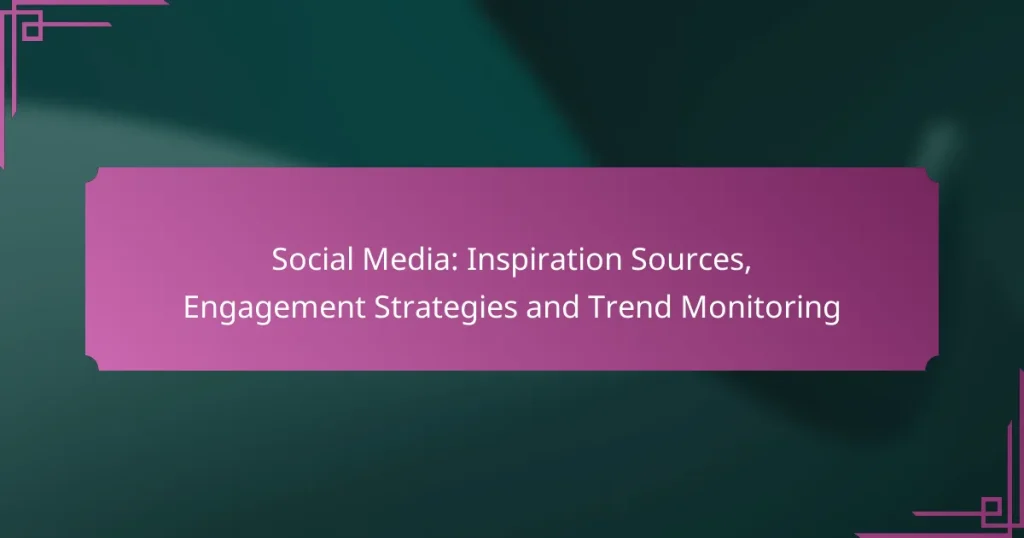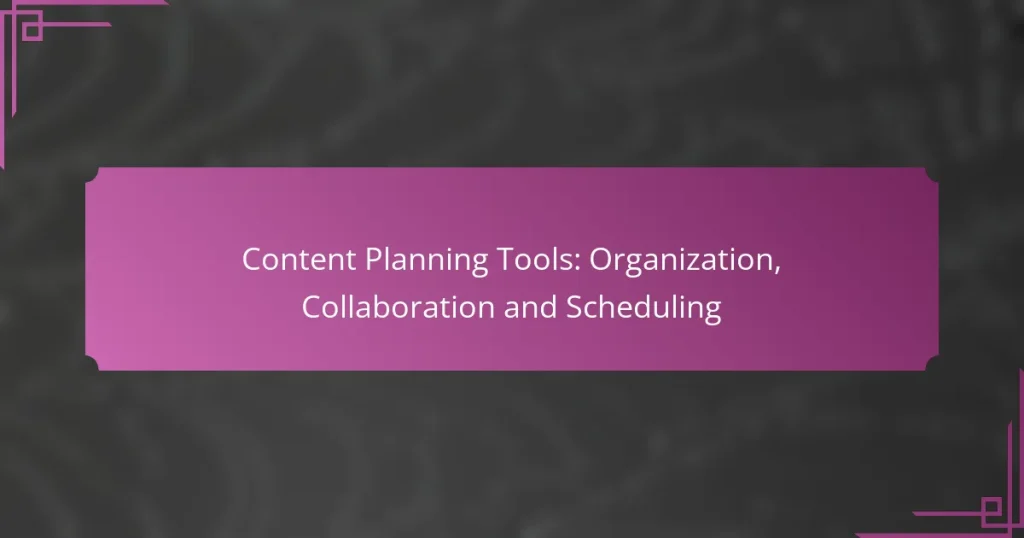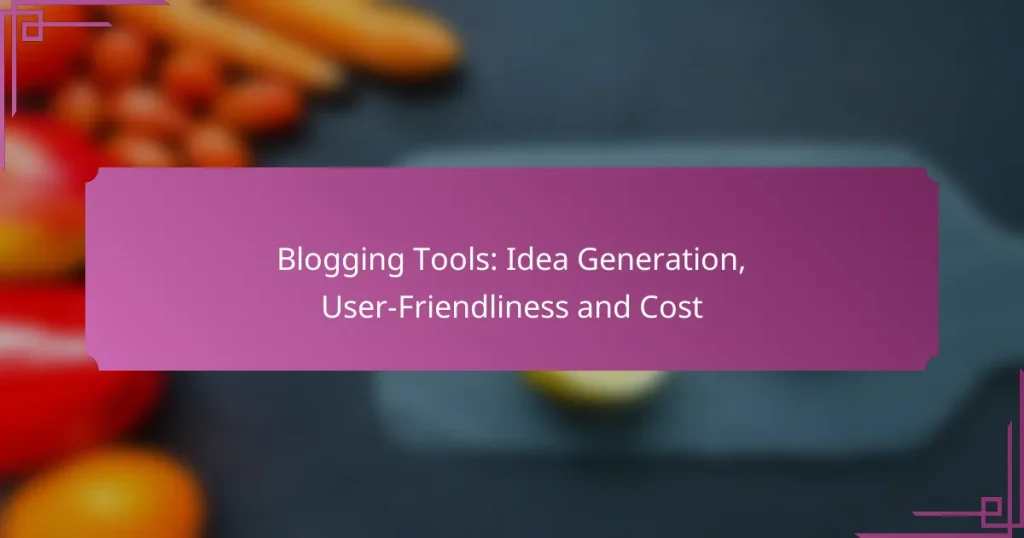Blogging can be a rewarding endeavor, especially with the right tools and resources at your disposal. From user-friendly platforms that simplify blog management to effective SEO strategies that enhance visibility, there are numerous options available to help you succeed. Additionally, leveraging content creation resources can streamline your process and elevate the quality of your writing, allowing you to focus on what truly matters: engaging your audience.
Writing Tools: Editing, Formatting and Style Enhancement
SEO Tools: Trend Analysis, Keyword Research and Competitor Insights
Content Planning Tools: Organization, Collaboration and Scheduling
Analytics Tools: Topic Popularity, Audience Insights and Performance Metrics
Blogging Tools: Idea Generation, User-Friendliness and Cost
Free vs Paid Blogging Platforms: Features, Flexibility and Cost-Effectiveness
What are the best blogging tools for beginners?
The best blogging tools for beginners are user-friendly platforms that simplify the process of creating and managing a blog. These tools often provide templates, easy customization options, and integrated features that help new bloggers focus on content rather than technical details.
WordPress
WordPress is one of the most popular blogging platforms, powering over a third of all websites. It offers a wide range of themes and plugins, allowing users to customize their blogs extensively. Beginners can start with WordPress.com for a hosted solution or choose WordPress.org for more control with self-hosting.
Consider starting with the free plan to explore its features, but be aware that upgrading may be necessary for advanced functionalities. Keep in mind that managing a self-hosted site requires some technical knowledge, especially regarding hosting and security.
Blogger
Blogger is a straightforward and free blogging platform owned by Google, making it easy to integrate with other Google services. It offers a simple interface and basic customization options, which are ideal for beginners who want to start blogging quickly without much hassle.
While it lacks some advanced features found in other platforms, its simplicity is a significant advantage for those just starting. However, users should note that Blogger has limited design flexibility compared to more robust platforms.
Wix
Wix is a website builder that includes blogging capabilities, featuring a drag-and-drop interface that makes it easy to design visually appealing blogs. It offers a variety of templates and customization options, allowing users to create a unique look without needing coding skills.
Wix is suitable for beginners who prioritize design and ease of use. However, some users may find that the blogging features are not as comprehensive as those offered by dedicated blogging platforms.
Medium
Medium is a unique platform focused on writing and storytelling, providing a clean and minimalist interface. It’s ideal for bloggers who want to reach a built-in audience and engage with readers through a community-driven approach.
While Medium offers limited customization options, its emphasis on content can be appealing for writers. However, users should consider that they have less control over monetization and branding compared to other platforms.
Squarespace
Squarespace is a premium website builder that offers beautiful templates and powerful blogging features. It is known for its design quality and is suitable for users who want a professional-looking blog without extensive technical skills.
While Squarespace requires a monthly subscription, it includes hosting and a range of integrated features, such as SEO tools and analytics. Beginners should weigh the cost against the benefits of having a polished, all-in-one solution for their blogging needs.
How can I optimize my blog for SEO?
To optimize your blog for SEO, focus on enhancing visibility in search engine results through strategic keyword usage, quality content, and effective link building. Implementing best practices in these areas can significantly improve your blog’s ranking and attract more organic traffic.
Keyword research tools
Keyword research tools help identify the terms and phrases your target audience is searching for. Popular options include Google Keyword Planner, Ahrefs, and SEMrush, which provide insights into search volume, competition, and related keywords.
When using these tools, aim for a mix of high-volume and long-tail keywords to capture both broad and specific search queries. Regularly updating your keyword strategy based on trends can keep your content relevant.
On-page SEO techniques
On-page SEO involves optimizing individual pages to rank higher and earn more relevant traffic. Key techniques include using targeted keywords in titles, headers, and throughout the content, as well as optimizing meta descriptions and image alt text.
Ensure your blog posts are well-structured with clear headings and subheadings. Additionally, focus on improving page load speed and mobile responsiveness, as these factors significantly impact user experience and search rankings.
Link building strategies
Link building is the process of acquiring hyperlinks from other websites to your own, which can enhance your blog’s authority and visibility. Effective strategies include guest blogging, creating shareable infographics, and reaching out to influencers in your niche.
Prioritize quality over quantity; a few high-quality backlinks from reputable sites can be more beneficial than numerous low-quality links. Regularly monitor your backlink profile to identify and disavow any harmful links that may negatively impact your SEO.
What are effective content creation resources?
Effective content creation resources are tools and platforms that assist bloggers in producing high-quality content efficiently. They can enhance visual appeal, improve writing quality, and facilitate topic research, making the content creation process smoother and more productive.
Canva for graphics
Canva is a user-friendly graphic design tool that allows bloggers to create visually appealing images, infographics, and social media posts. With a wide range of templates and design elements, users can customize their graphics easily, even without prior design experience.
To maximize Canva’s potential, take advantage of its drag-and-drop interface and extensive library of free images and icons. Consider using brand colors and fonts to maintain consistency across your blog, which can enhance your brand identity.
Grammarly for writing
Grammarly is an online writing assistant that helps improve grammar, punctuation, and style in your blog posts. It provides real-time feedback and suggestions, making it easier to produce polished content that resonates with your audience.
When using Grammarly, pay attention to its tone suggestions and clarity improvements. While it can significantly enhance your writing, be cautious not to rely solely on its recommendations; always review your content for your unique voice and style.
BuzzSumo for topic research
BuzzSumo is a powerful tool for discovering trending topics and content ideas relevant to your niche. By analyzing what performs well on social media and other platforms, it helps bloggers identify popular themes and formats that engage audiences.
To effectively use BuzzSumo, input keywords related to your blog’s focus and explore the results for inspiration. Look for content with high engagement metrics, such as shares and comments, to inform your writing and ensure it aligns with current interests in your field.
How do I monetize my blog?
To monetize your blog, consider various strategies that can generate income, such as display advertising, affiliate marketing, and sponsored posts. Each method has its own advantages and challenges, so it’s essential to choose the right mix based on your audience and content type.
Display advertising with Google AdSense
Google AdSense allows bloggers to earn money by displaying ads on their sites. When visitors click on these ads, you earn a portion of the revenue generated. This method is relatively straightforward to implement, requiring only a Google account and some basic setup on your blog.
Consider the placement of ads carefully to maximize visibility without disrupting the user experience. Ads can be placed in various formats, including banners and in-text links. It’s common for bloggers to earn anywhere from a few cents to several dollars per click, depending on the niche and audience engagement.
Affiliate marketing programs
Affiliate marketing involves promoting products or services and earning a commission for each sale made through your referral link. Many companies offer affiliate programs, which can be easily integrated into your blog content. Popular options include Amazon Associates, ShareASale, and CJ Affiliate.
To succeed in affiliate marketing, focus on products that align with your blog’s theme and audience interests. Providing honest reviews and recommendations can increase your credibility and conversion rates. Commissions can vary widely, typically ranging from 5% to 50% of the sale price.
Sponsored posts
Sponsored posts are articles or content created in collaboration with brands that pay you to promote their products or services. This method can be lucrative, especially if your blog has a strong following. Brands often look for bloggers who can authentically connect with their target audience.
When considering sponsored posts, ensure that the content remains relevant to your readers and maintains your blog’s integrity. Disclose any sponsored content to comply with advertising regulations. Payment for sponsored posts can vary significantly, often ranging from a few hundred to several thousand dollars, depending on your blog’s reach and influence.
What are the best practices for blog promotion?
Effective blog promotion involves utilizing various strategies to increase visibility and engagement. Key practices include leveraging social media platforms and implementing email marketing tactics to reach a broader audience.
Social media marketing
Social media marketing is essential for promoting your blog and engaging with your audience. Choose platforms that align with your target demographic, such as Facebook, Instagram, or Twitter, and share your blog posts regularly to drive traffic.
Consider creating visually appealing graphics or short videos to accompany your posts. Engaging with followers through comments and direct messages can also foster community and encourage sharing of your content.
Email marketing strategies
Email marketing is a powerful tool for blog promotion, allowing you to reach subscribers directly. Build an email list by offering incentives like exclusive content or freebies, and send regular newsletters featuring your latest blog posts.
Segment your audience based on interests to tailor your messages effectively. Aim for a consistent schedule, such as weekly or bi-weekly emails, to keep your audience engaged without overwhelming them.






